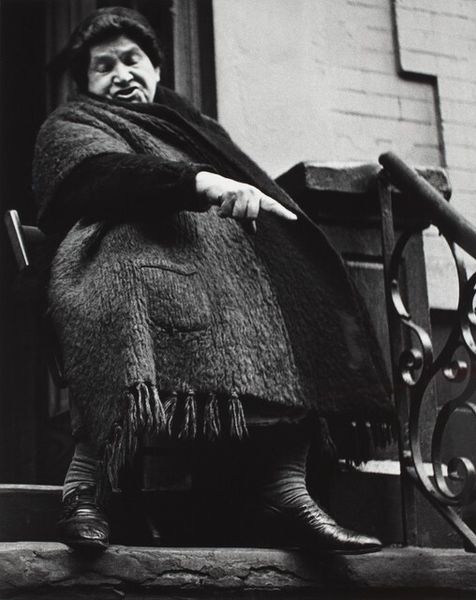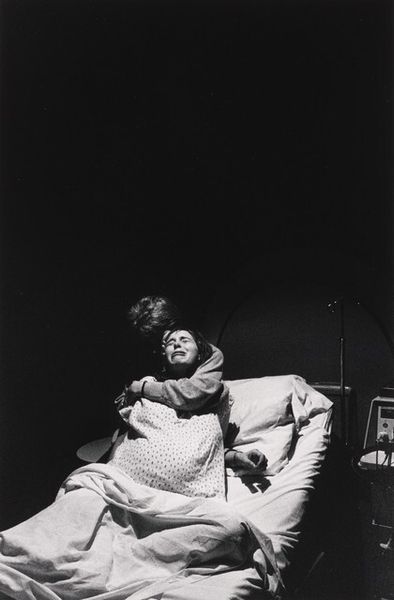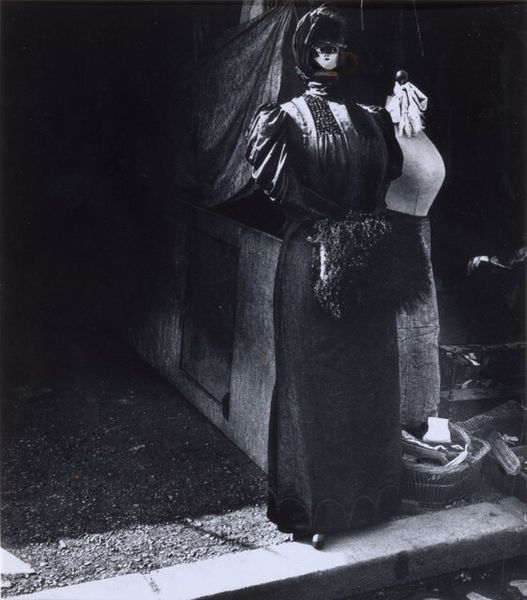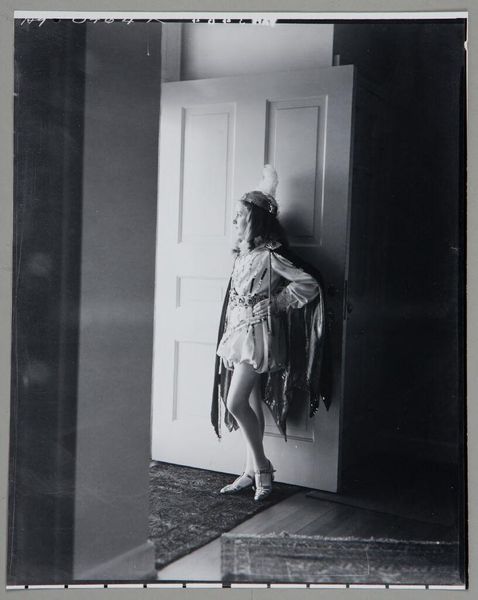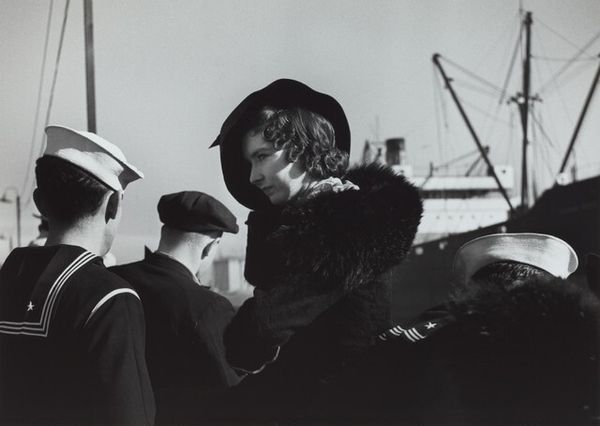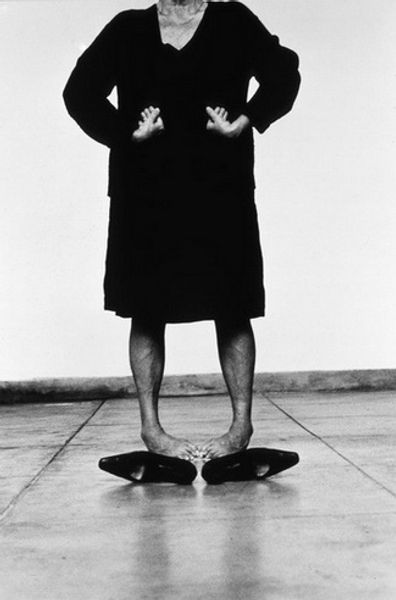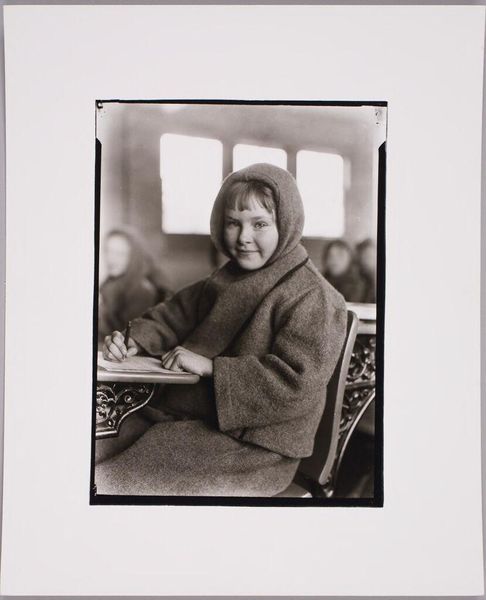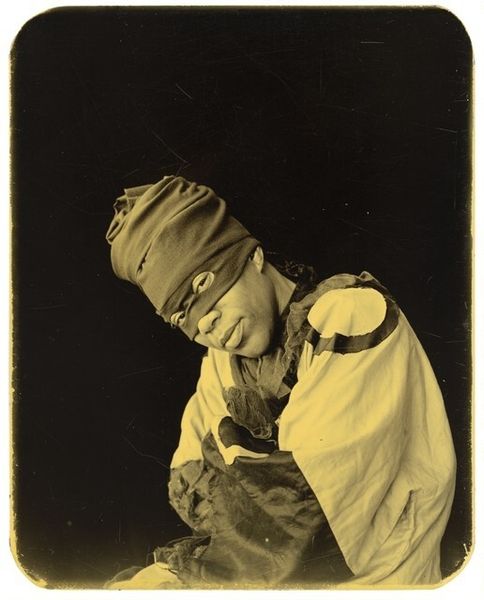
photography, gelatin-silver-print
#
portrait
#
black and white photography
#
black and white format
#
street-photography
#
photography
#
black and white
#
gelatin-silver-print
#
monochrome photography
#
ashcan-school
#
monochrome
#
realism
#
monochrome
Dimensions: image: 49.7 x 39.5 cm (19 9/16 x 15 9/16 in.) sheet: 50.6 x 40.5 cm (19 15/16 x 15 15/16 in.)
Copyright: National Gallery of Art: CC0 1.0
Curator: Lisette Model captured this stark yet intimate photograph, titled "Lower East Side," around 1942. It’s a gelatin silver print. What’s your immediate impression? Editor: Overwhelmingly somber. The woman’s burdened posture, almost swallowed by that heavy, coarse shawl… it evokes a real sense of hardship, of weathering something immense. Curator: Indeed. Model’s work, particularly this image, became emblematic of the Ashcan School's ethos – portraying unvarnished realities. The Lower East Side in that era was teeming with immigrants facing tremendous socio-economic difficulties, and she made it a mission to put these narratives on the gallery walls. Editor: That shawl... It almost feels like a symbolic weight, like societal expectations or inherited traumas pressing down. Notice how it’s almost shapeless, obscuring her form. The textures, however, feel so raw and immediate, grounding the work in stark realities. Curator: It does. It’s easy to romanticize poverty or immigration, but there is little to none of that here. Model’s artistic choice – using such direct, unflinching compositions – challenges the viewer. It's interesting because she had formal training with artists like Fernand Léger, yet turned towards gritty street photography. Editor: It almost negates any form of idealism. I see an enduring human spirit, but it is exhausted. The monochrome palette simplifies everything, paring down to essentials; the contrasting shadows seem to echo the internal contrasts, resilience warring with despair. Curator: The shadows also have their social role here, visually conveying the subject as a marginal figure within a bustling metropolis – that could be swallowed any time. Think about photography's burgeoning role during the Depression era in shaping public perception; photography's social agenda to tell stories and to affect viewers in certain ways was only beginning to develop. Editor: Model strips back everything, making us directly confront an individual shaped by the urban landscape. She has created something incredibly haunting by rejecting traditional artistic conventions. There is a strange strength to the silence embedded here. Curator: Right. Ultimately, "Lower East Side" is a powerful historical document but also a very palpable depiction of endurance amidst adversity – captured through Model's uniquely uncompromising lens. Editor: A vital reminder of resilience that refuses any superficial beauty. It will stay with me.
Comments
No comments
Be the first to comment and join the conversation on the ultimate creative platform.
